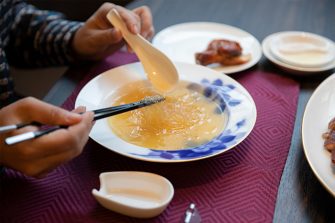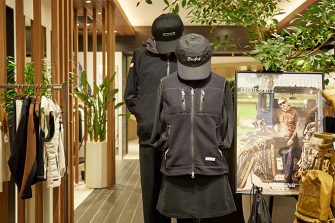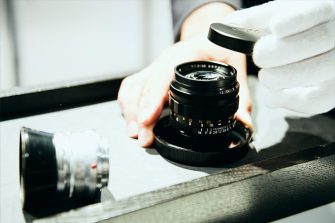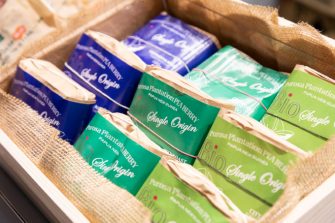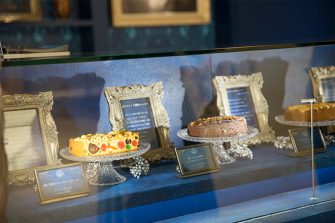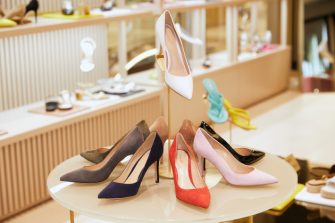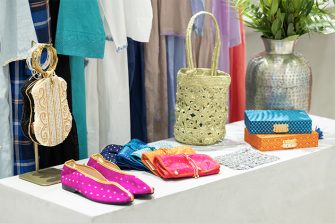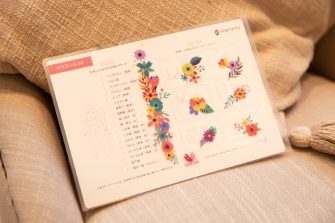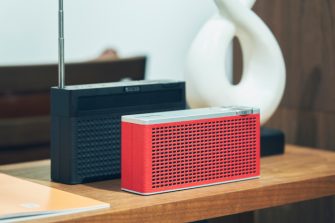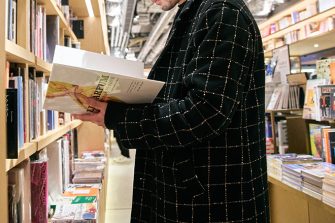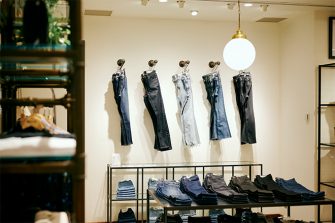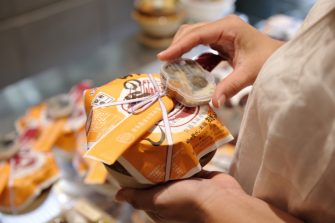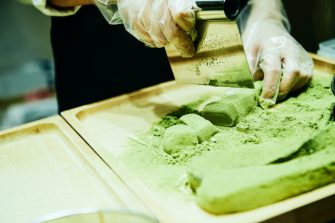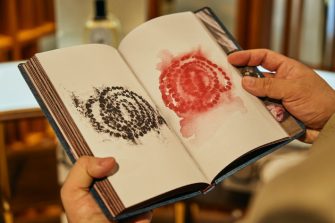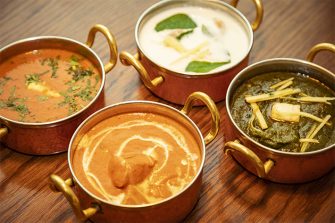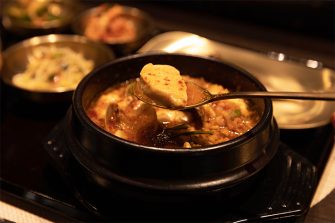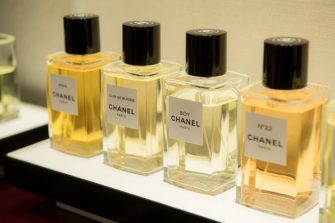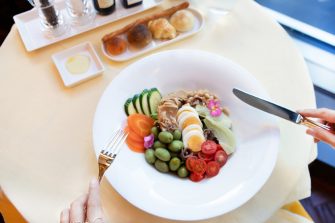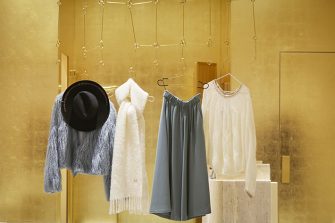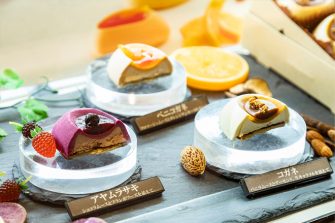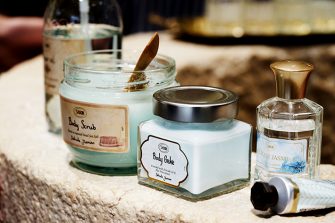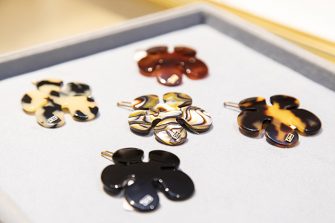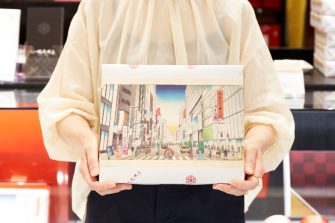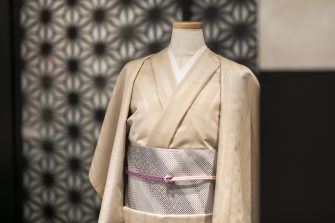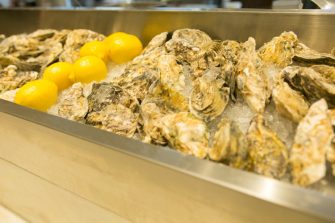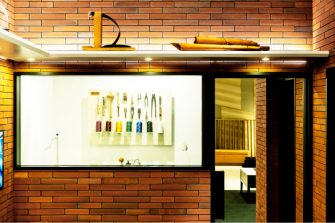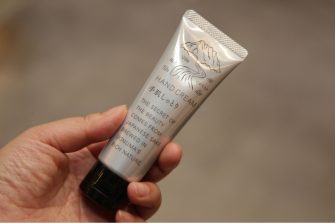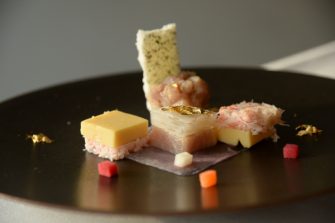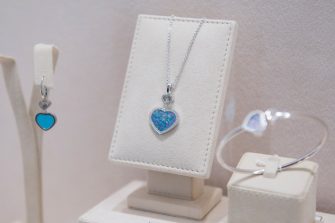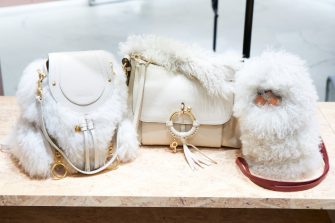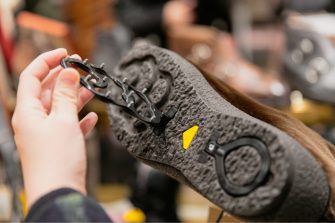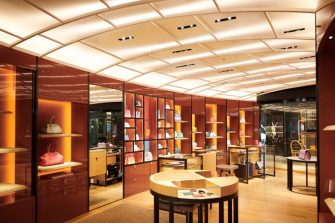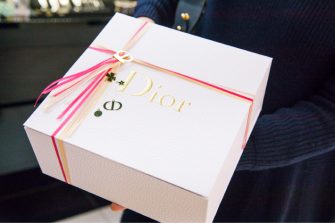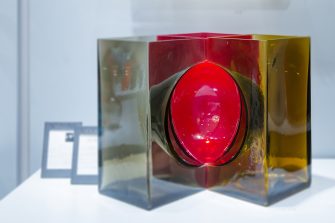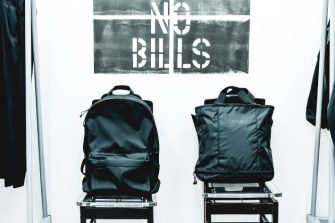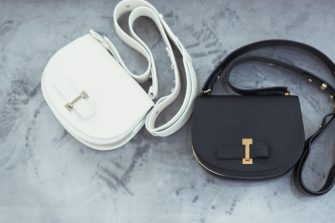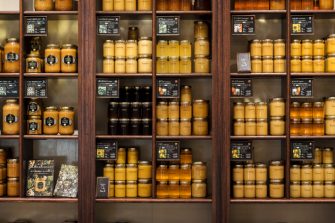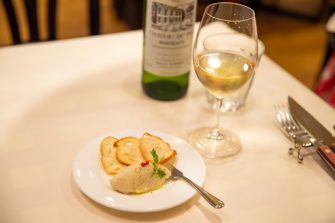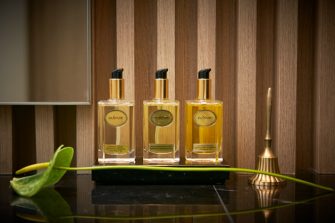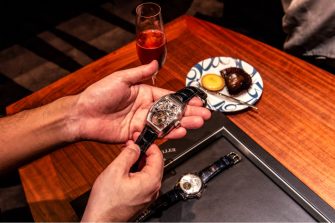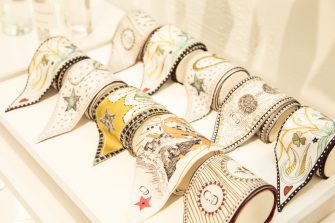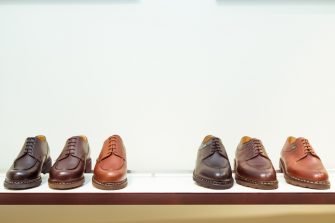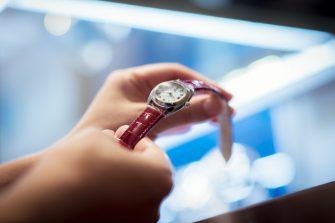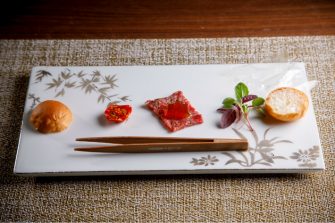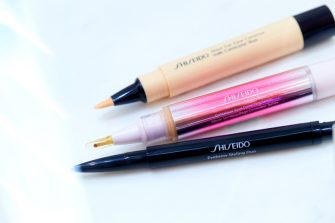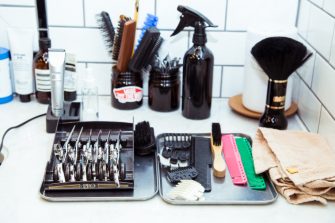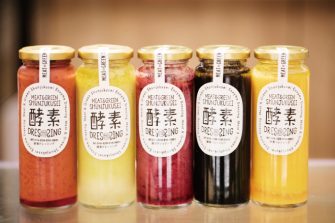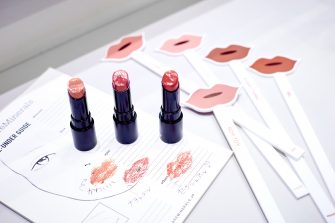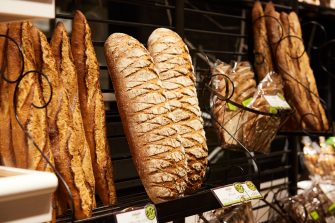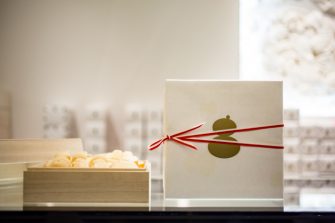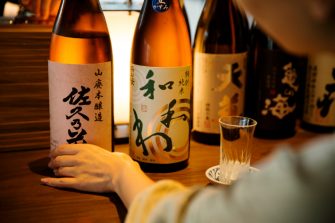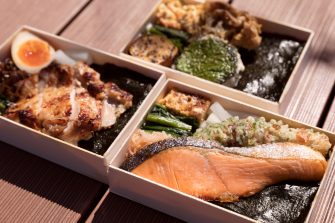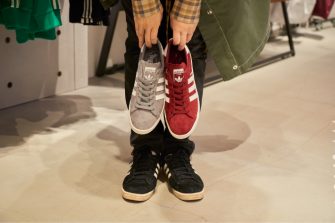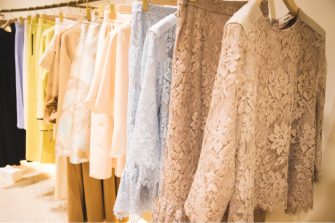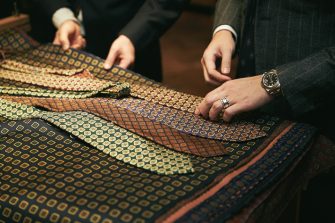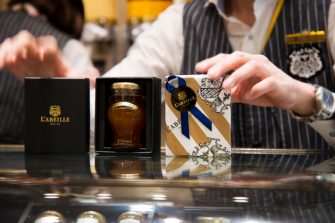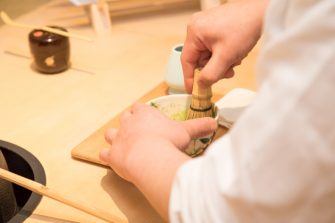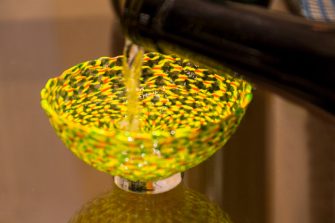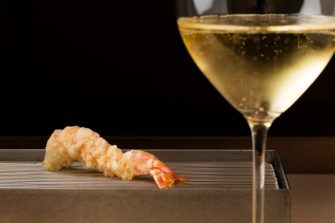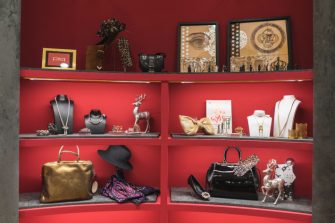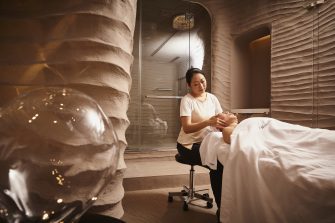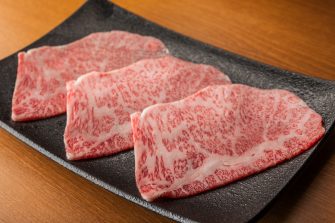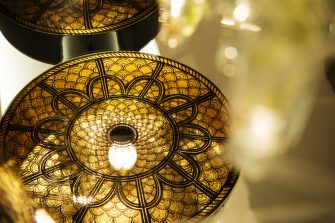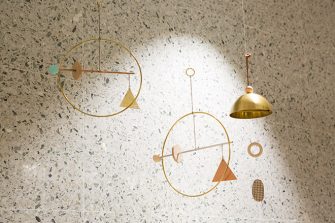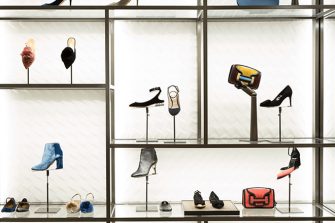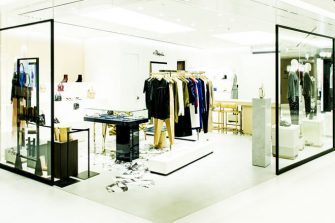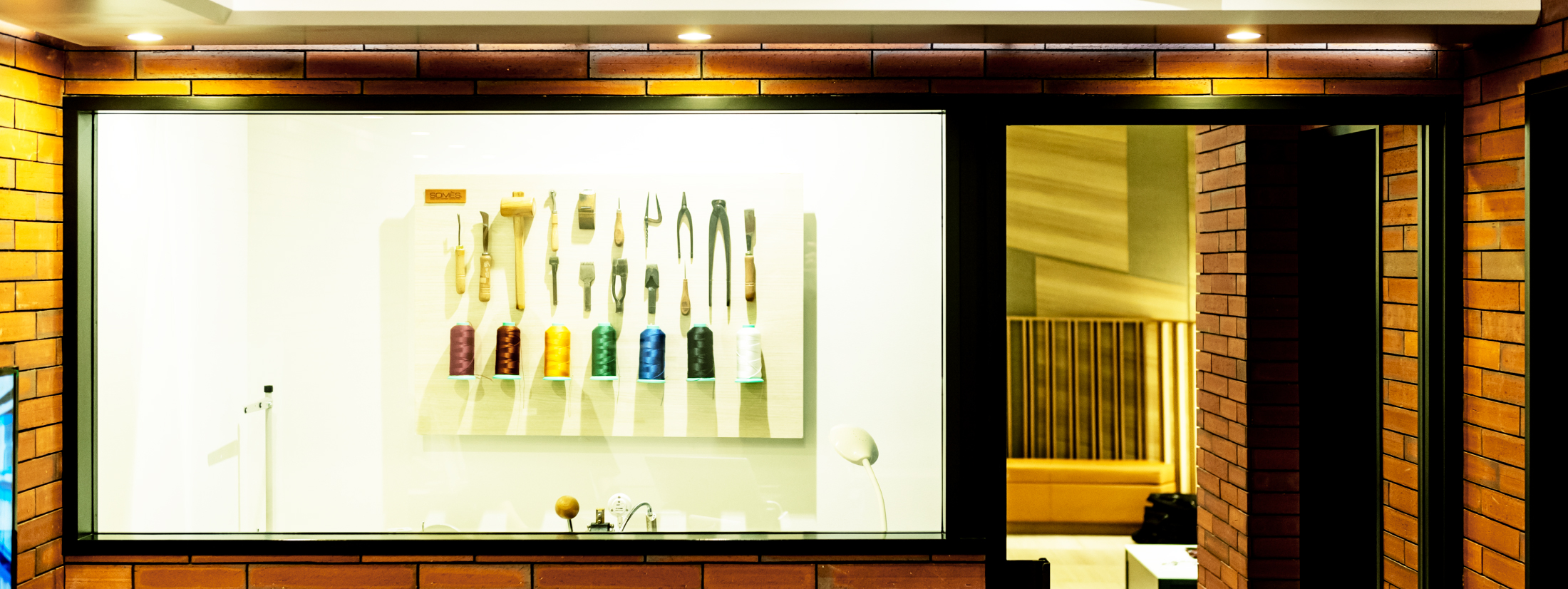

GINZA SIX EDITORS
ファッション、ジュエリー&ウォッチ、ライフスタイル、ビューティ、フード…
各ジャンルに精通する個性豊かなエディターたちが、GINZA SIXをぶらぶらと
歩いて見つけた楽しみ方を綴ります。
いつだってGINZA SIXは楽しい GINZA SIX Is Fun Whenever
澤田 真幸
GINZA SIX EDITORS Vol.73
隅田川を渡った先に住んでいることもあって、銀座は何かと近く、普段からふらっと訪れることが多い。銀座という街の魅力は、それこそたくさんあるけれど、個人的には懐が深いところだと思っている。目抜き通りにはきらびやかに彩られたハイブランドのメゾンが立ち並び、値段も格式も最高級のお店が集まる一方で、すぐ横の路地を一本入ると100年続くいぶし銀の老舗や気軽に入れる庶民的なお店が軒を連ねる銀座は、いい意味での敷居の高さがありながら、それでいて間口は広く、いつどんなときでもここに来れば楽しいと思わせてくれる懐の深さがある。
実は、これと同じようなことをGINZA SIXにも感じている。世界各国から個性豊かなお店が集まった館内は、さながら諸国漫遊の趣があり、行くたびにテーマパークに迷い込んだかのような高揚感を覚え、その感覚はオープンから2年近く経った今も変わらない。特に目的がなくても、GINZA SIXに行けば必ず何か楽しいことがある。今回もそんな気持ちでGINZA SIXをぶらりと訪ねてみた。

館内に入り、2Fに上がると、頭上に巨大なアート作品が展示された吹き抜けの空間が現れる。GINZA SIXはフォトジェニックな場所が多いけれど、この空間が個人的にいちばん好きだ。特に上階へと向かうエスカレーターから見る吹き抜けの景色は格別エモーショナル。上がっていくにつれて眼下の景色が広がり、それはまるでひとつの街が立ち現れるような感じで、いつ見ても心が躍る。中央のアート作品はおよそ半年で展示替えするらしく、現在はニコラ・ビュフの作品が飾られているが、2月27日より塩田千春による新作インスタレーションが展示されるという。どんな景色が立ち上がるのか、楽しみだ。
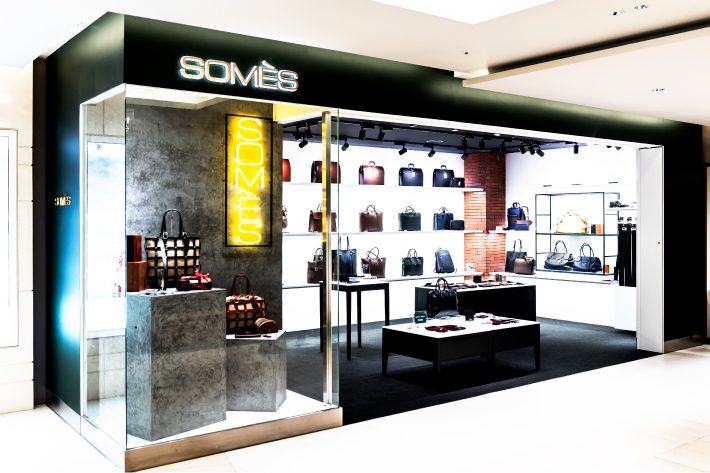
そのままエスカレーターに乗って5Fへ。今使っている名刺入れが少しくたびれてきたのを思い出し、「ソメスサドル」を覗いてみることにした。「ソメスサドル」は1964年に北海道歌志内市で創業した、日本で唯一の総合馬具メーカー。世界で活躍するトップジョッキーのための鞍や宮内庁に納める馬車具を手がけるほか、バッグや財布などの革製品も製作している。以前ここのバッグを取材したことがあり、革の品質に対する徹底的なこだわり、オールハンドメイドによる妥協のないものづくりに共感する部分が多く、ずっと気になっていたのだ。
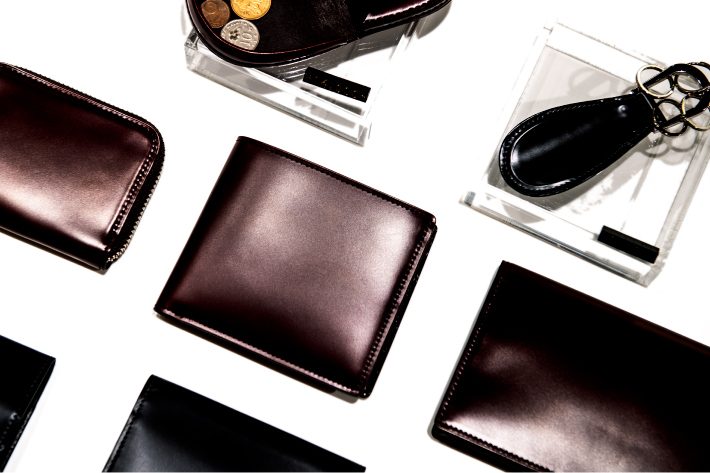
まず手に取ったのは、希少素材である馬の尻部分の革、コードバンを使った定番シリーズ「ハノーバー」の名刺入れ(14,000円 ※以下全て税抜価格)。コードバンはほかの革に比べて水に弱く、濡れるとシミができるという弱点があるが、やはりこの独特の深い艶と色合いは魅力だ。
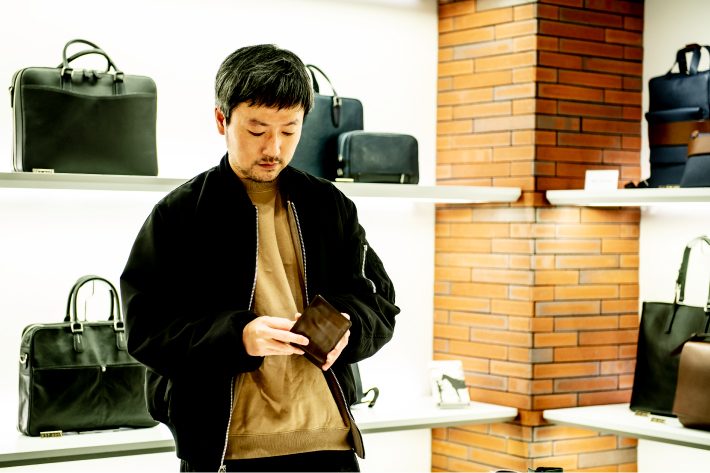
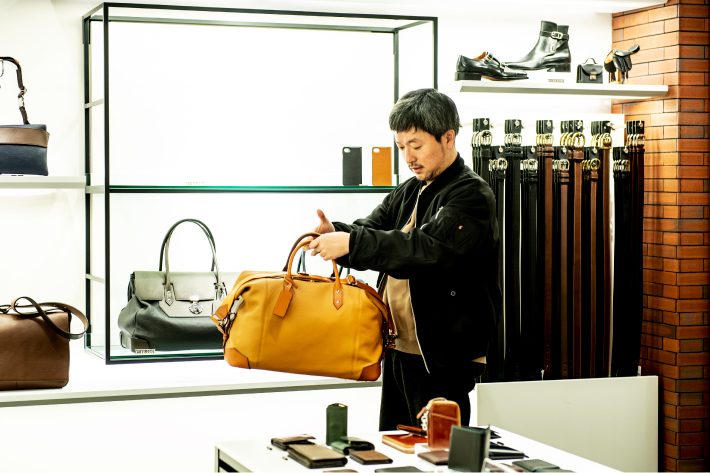
コードバン以外にもカーフを使ったアイテムもあり、そちらも文句なしに上質。そして、名刺入れを見たあとは、バッグもチェック。気になったのは、「ソメスサドル」がシューズデザイナーの坪内浩をデザイナーに迎えて2014年にスタートしたHTレーベルの「BOSTON L」(180,000円)。革はしっとりと柔らかく、馬具用のミシンで仕立てられた丸いハンドルはいかにも丈夫で手に馴染む。底の四隅には厚い牛革が当てられているので、汚れや衝撃を必要以上に気にしなくて済むのもうれしい。2泊3日程度の旅ならリュックで出掛けることが多いけれど、こういうボストンもいいよなと思った次第。
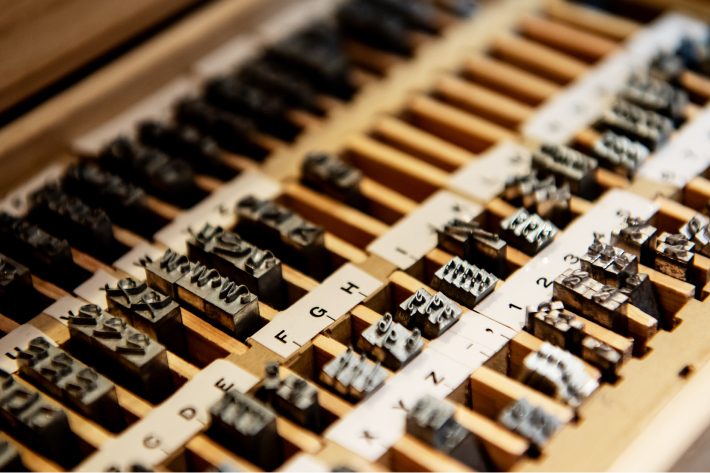
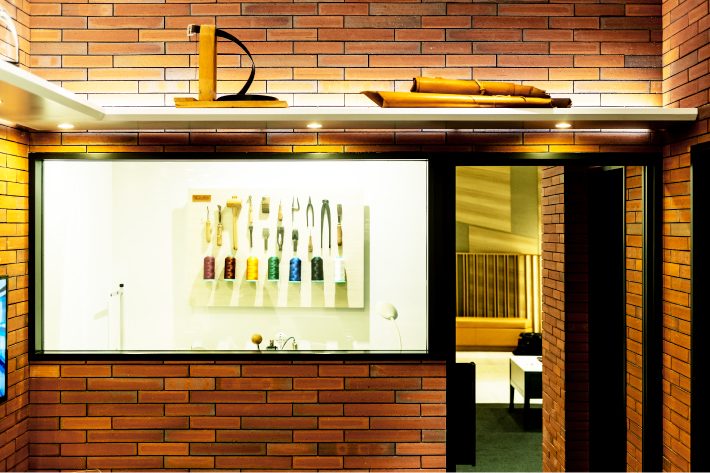
「ソメスサドル」の商品は、名刺入れにしてもバッグにしても、どれもこれ見よがしではない品のよさがあって、大事に長く使いたいなと思わせるものだった。そもそも革製品はちゃんとケアすれば、一生付き合えるアイテムだ。軽やかにトレンドを楽しむマインドも必要だが、ひとつのものを大事に使い続けていくことの喜びはちゃんと知っていたい。使い込むと色艶を増し、経年変化とともに自分だけの味が出てくるレザーは、これからの自分の目指すべき生き方とも重なるようで、俄然愛着が湧く。しかも、「ソメスサドル」はサービスも手厚く、購入時に無料でネームを刻印してくれるだけでなく、店内に併設したメンテナンススペースでは革の手入れに欠かせないオイルアップも無料で行っている。万が一壊れたときは修理専門のチームがいるので、その点も安心万全だ。
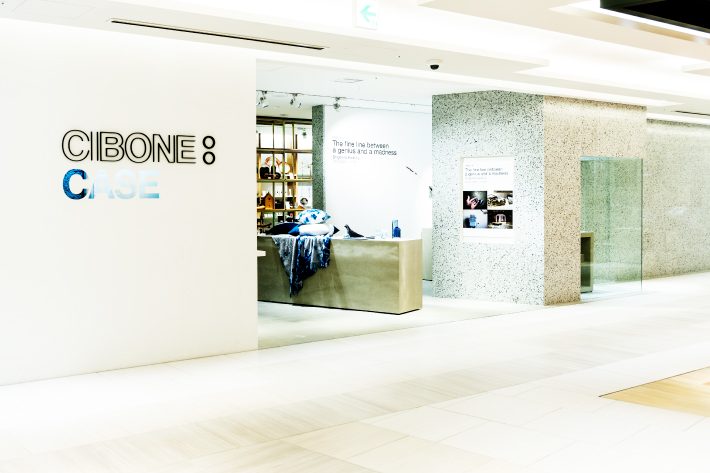
続いて向かったのが、「シボネケース」。南青山にある「シボネ」からスピンアウトしたこのお店は、ライフスタイルショップが集まる4Fの中でもひときわ存在感を放っている。取り扱っているのは、国内外のクリエイターの作品や現代の日本のものづくりなど、ジャンルにとらわれず、自由な切り口で集められたプロダクトたち。個人的にインテリア雑貨が好きでいろいろなお店を覗いているが、ここはセレクトが自分好みなので、インテリアのヒントをもらうためのショーケースとしてGINZA SIXに来たときは決まって立ち寄るようにしている。
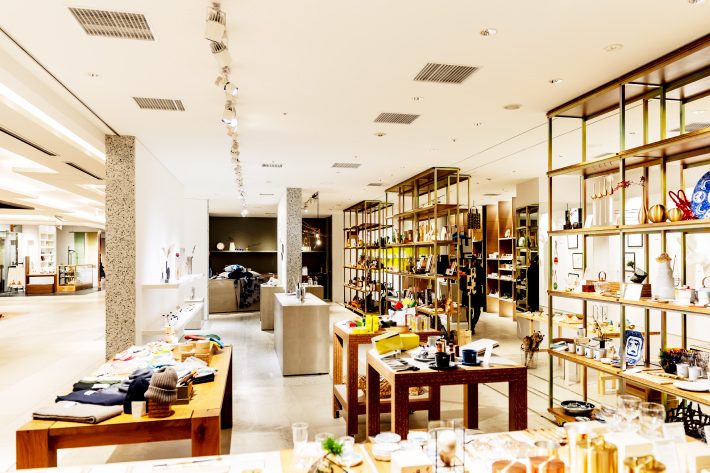
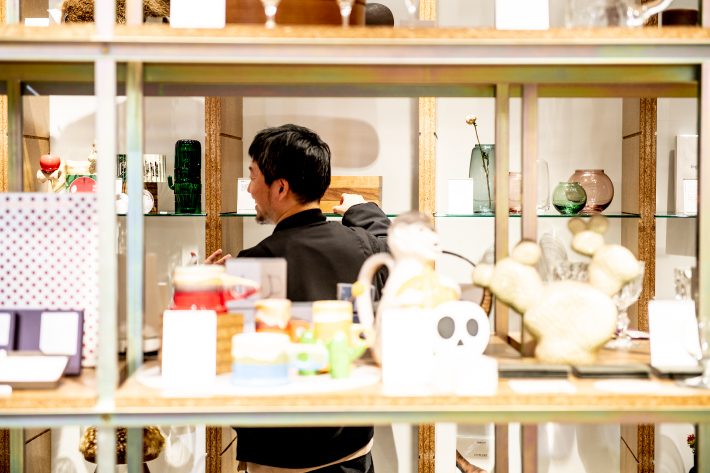
「こういう使い方はたしかにいいかも」「これはいいアクセントになりそう」。そんなことをあれこれと想像しながら店内を回遊。店内の一角にはギャラリースペースがあり、約1カ月ごとに新たな企画を展開しているのだが、そこで新しい作家を知ることもあり、それもまた楽しみのひとつになっている。日々の暮らしの解像度を高めてくるグッドデザインなプロダクトとの出会い。訪れるたびに新しい発見の喜びがあり、ついつい時間が経つのを忘れてしまう。
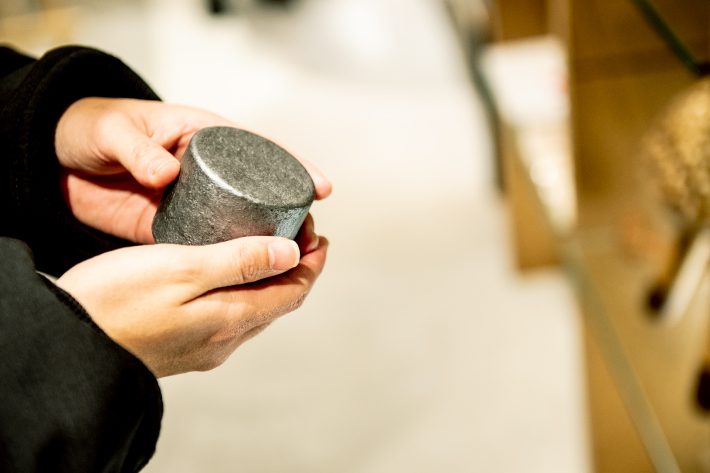
欲しいものはたくさんあったが、その中から今回は2つをチョイス。埼玉県で陶工房を営む鳥居明生の作品は、陶の塊を窯で焼き、表面を磨いてつくったもの(3,981円~)。例えばこれは一見すると茶筒のようだが、蓋はなく、言ってしまえばただの筒状のやきものなので、ペーパーウェイトにしたり、アクセサリーや小物を置いたりと、使い方は自由。自分だったらどう使うだろう? 単なる道具としての機能を超えて、使う側の想像力を試されるのが面白い。プレゼントとして贈るのもいいかもしれない。
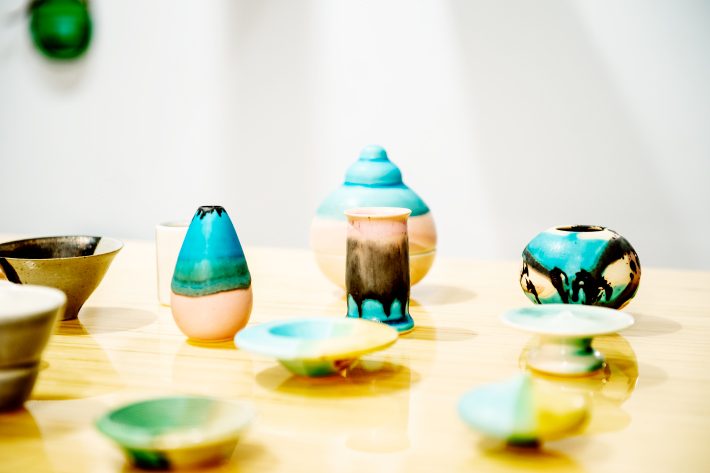
カラフルなうつわたちは、千葉県にアトリエを構える竹村良訓の作品。決まった型はなく、形も色も即興でつくり上げていくスタイルのため、出来上がった作品はひとつひとつフォルムや色彩が異なり、それぞれに魅力がある。本音を言うと全部欲しいが、気になったのは、一輪挿しタイプのもの(ショートピースB/5000円)。何を飾って、どこに置こうか。新しい暮らしの風景を想像するこの時間が何とも楽しい。
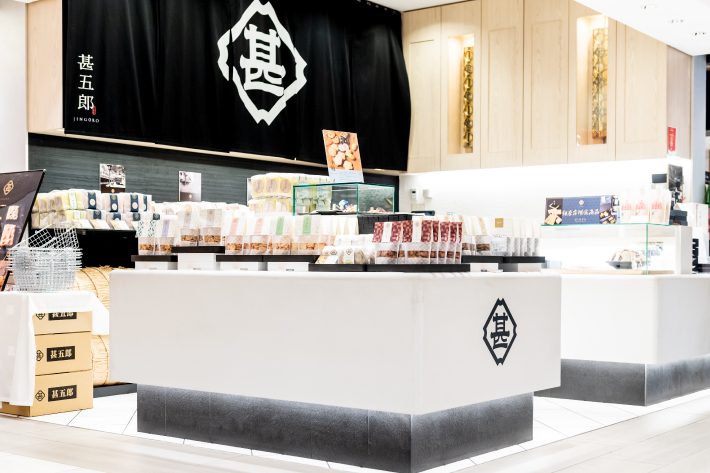
最後は、B2Fまで降りて、フーズフロアへ。このあと人に会う予定があり、そのときに渡す手土産を探しにやって来た。人と会うときはできるだけ手土産を用意するようにしている。しかし、この手土産が難しいのだ。量や値段、見栄え、味など、考え始めたらキリがない。だから、いい手土産を知っているかは、できる大人のバロメーターだと思っている。
そんなできる大人におすすめされたのが、「甚五郎」だ。「甚五郎」は、栃木県日光市で1907年に創業した老舗米菓店「日光甚五郎煎餅 本舗 石田屋」が都内に初めて出したお店。名物はもちろん、煎餅である。なかでも、GINZA SIX限定となる「匠美」は絶品と評判で、わざわざ買いに来る人も多いという。
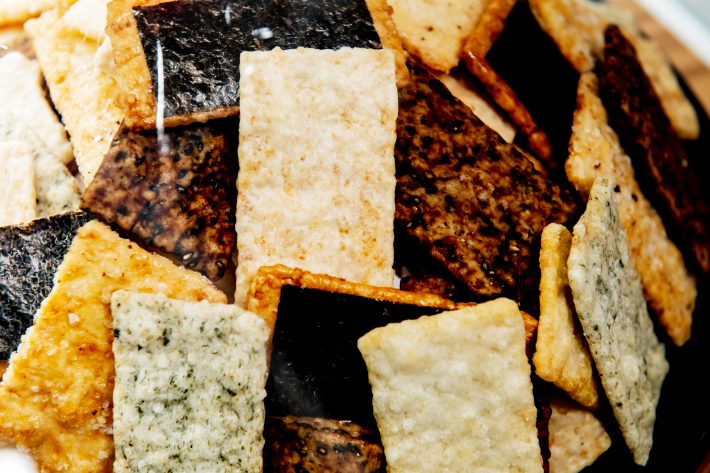
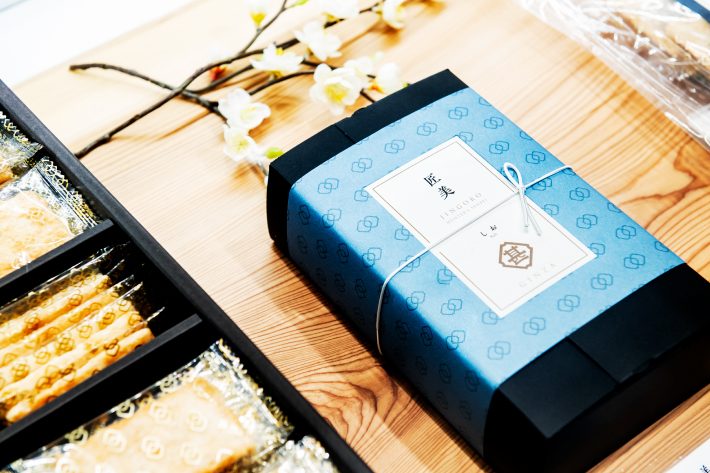
うるち米ともち米をブレンドしてつくられ、ざくっとした噛みごたえと豊かな風味が特徴の「匠美」。味は全部で6種類(しお、海苔しお、海苔醤油、海老、胡麻味噌、梅ざらめ)あり、いちばん人気は「しお」(18枚入り1,200円)。ひと口食べると、口の中に洗練された塩のうま味が広がり、いやあ、これは評判以上のおいしさ。パッケージも洒落ているので、手土産に最適だ。
ほかにも、店内にいろいろな味の煎餅がずらりと並び、気になる味は試食させてくれるので、辛党な自分は「スパイシーカレー」(445円)をリクエスト。世の中にあるカレー味の多くは辛さがもの足りなかったりするが、これはかなりスパイシーで大満足。さらに、店員さんとの話の流れから、「パクチー」(445円)も試食。パクチーは苦手だけれど、「そういう方にこそぜひ食べてみてほしい」と店の人に言われ、トライすることに。うん、たしかにパクチーだ。でも、レモンの風味が効いて、イヤじゃない。むしろこれ好きかも。
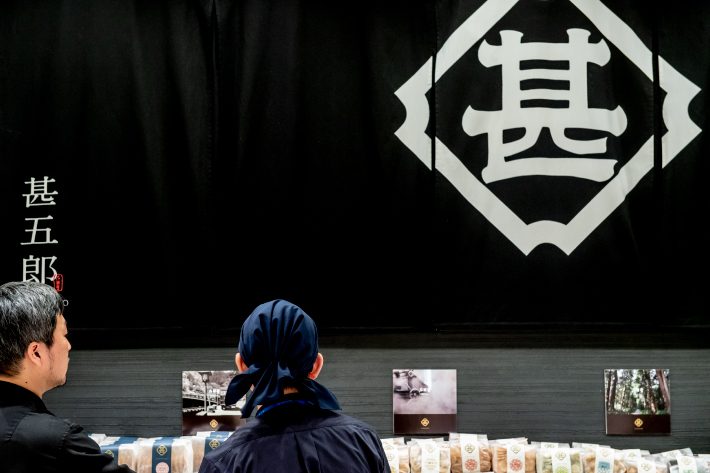
店名の「甚五郎」は、日光東照宮にある「ねむり猫」の作者としても知られる伝説の名工、左 甚五郎に因んで名付けられたという。この左 甚五郎は謎が多く、実在の人物ではなかったとも言われているが、彼がつくったとされる作品は今も全国に100か所ほど残っている。ことさらに蘊蓄をひけらかすのは野暮だけれど、手土産がちょっとした会話のネタになるのはありがたい。その点でも、「甚五郎」はおすすめだ。
ノープランでふらっとやって来ても、何かしら楽しい出会いがあり、必ず満足して帰ることができる。自分にとってGINZA SIXは、日々の暮らしを楽しくしてくれる場所だ。そういう場所があったほうが、人生は間違いなく豊かになると思う。GINZA SIXがあって本当によかった。
Text:Masayuki Sawada Photos:Yuichi Sugita Edit:Yuka Okada
I live just on the other side of the Sumida River, so Ginza is close by. I’ll often go and wander around on my own time. Many things about the Ginza district are appealing, but what I like most is its inclusiveness. The main streets are decorated resplendently and lined with high-end fashion houses and stores of the highest rank, both in terms of price and status. At the same time, if you wander down one of the side streets, you’ll immediately come across tasteful establishments that have operated for a hundred years or more, along with welcoming places popular with regular folk. Alongside the glitter and high end, it is also full of stores and restaurants, which make Ginza less intimidating. The bottom line is its scope is broad, with an inclusiveness that makes Ginza a delightful place to visit whenever and for whatever reason.
I see this same quality in GINZA SIX, which features many unique stores from around the world. Visiting feels like an international tour. Each time I go, I feel the same excitement I feel when I go to a theme park. In the nearly two years since its doors opened, this excitement hasn’t waned. It’s always fun to go, even if you have no specific goal. I went and wandered GINZA SIX once again this time with that same sense of excitement.

Heading inside and up to the second floor, you come across a spacious atrium and a giant art installation overhead. GINZA SIX has many places for photos, but I like this space best. The view from the escalators to the upper floors is inspiring. As you go up, the view expands before your eyes, an entire town unfolding before you. My heart flutters no matter how many times I see it. The atrium artwork changes every half year or so, I’m told. The current work is a piece by Nicolas Buffe. A new installation by Chiharu Shiota is scheduled to go up on February 27. I look forward to seeing this new view as well.

I continue up the escalator to the fifth floor. It occurs to me, suddenly, that the business card holder I currently use is well worn, so I decide to check out SOMÈS SADDLE, an establishment founded in Utashinai, Hokkaido, in 1964. It’s the only maker of horse harnesses in Japan. The company supplies leather products such as saddles to some of the world’s top jockeys, as well as equipment for horse-drawn carriages maintained by the Imperial Household Agency. It also makes bags, wallets, and other leather goods. I did some research on the bags here once before for an article, and I was impressed by the company’s dedication to the quality of its leather and its uncompromising stance on handcrafting everything it makes. I’ve been interested in the brand ever since.

I first take a look at the brand’s standard HANOVER series business card holder (14,000 yen; all prices listed before tax), made of shell cordovan leather, a luxury equine leather made from rare material beneath the hide on the rump of a horse. Cordovan isn’t as water resistant as other leathers and can stain if it gets wet, which is the downside, but it’s deep gloss and coloring have great appeal.


Besides cordovan, some products are made with calf leather. These, too, are indisputably of the highest quality. After looking at the business card holders, I check out the bags. After signing designer Hiroshi Tsubouchi, SOMÈS SADDLE launched its HT Label in 2014. I’m especially intrigued by the BOSTON L (180,000 yen) in this series. The leather’s soft, and the rounded handles made with sewing machines used to make horse harnesses are sturdy and feel comfortable in the hand. The four bottom corners are thick cowhide leather to put to rest worries about dirt and wear. I often go on three-day/two-night trips with a backpack. I find myself thinking this Boston would also work.


SOMÈS SADDLE products, whether business card holders or bags, all have an understated refinement. They inspire you to use and maintain them for long with a special a sense of care. With proper care, leather products last a lifetime. An eye for the latest trends is commendable, but the joy of owning and cherishing something for years and years has an appeal all its own. The feel and color of a leather product deepens with use and over time. Unique qualities emerge. The article merges with the life you strive to lead, and you find yourself suddenly very attached. SOMÈS SADDLE also offers comprehensive line of services. The store will inscribe your name on a product, free of charge. The maintenance space within the store will oil the leather for you, another complimentary service that also happens to be essential to the care and maintenance of leather goods. And if something breaks, the dedicated repair team has you covered.
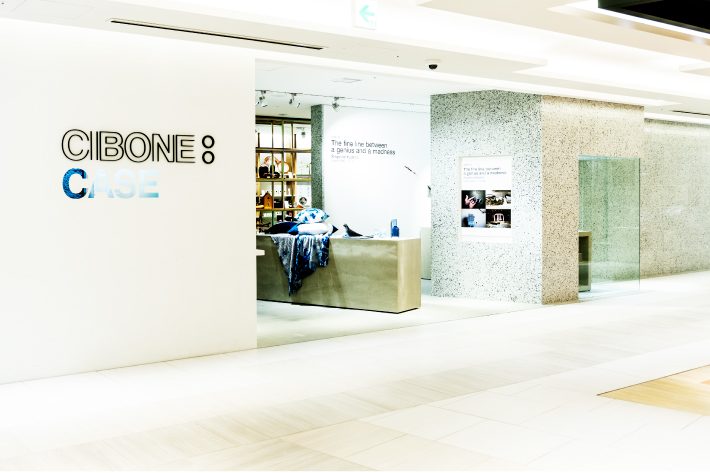
My next stop is CIBONE CASE, a spinoff of CIBONE in Minami Aoyama. It has a conspicuous presence, even on the fourth floor, among all the lifestyle shops. They carry all sorts of products selected without regard for category, including works by creators in Japan and abroad and products from contemporary Japanese makers. I like interior products of all kinds and tend to check out the various stores that sell these products, but the selection here is right up my alley. Whenever I come to GINZA SIX, I stop in and look at the showcases for decorative ideas.

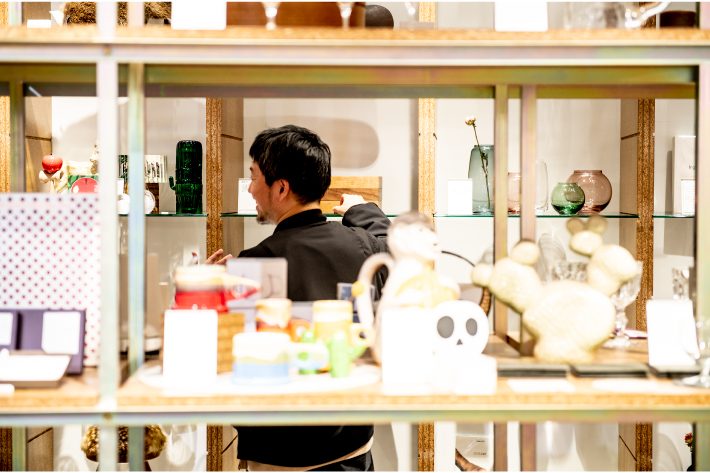
Some of the thoughts that go flitting through my head: “Using something like that in that way, that’s sheer genius!” and “Hmmm, I bet this would make a nice accent piece.” I go around the store imagining worlds of possibilities. The store features a corner gallery with new exhibitions every month or so, a great way to discover new artists and yet another thing to look forward to. You’ll also find well designed products that pleasingly accentuate our day-to-day lives. The sheer joy of discovery every time you visit makes you lose track of time.

There’s a lot I want, but this time I choose just two. One is this work by Akio Torii (3,981 yen), who operates a ceramics studio in Saitama Prefecture. It’s made by baking a clay mass in a kiln and polishing the surface. At first glance, it looks like a tea caddy, but one lacking a lid. It’s a ceramic cylinder, to put it bluntly. You can use it as a paperweight or put it somewhere as an accessory of some sort. The uses are endless. What can I use it for? It transcends its function as a simple implement and tests the imagination of the person using it. It would make a good gift, too.

These colorful vessels are the work of Yoshinori Takemura, whose atelier is located in Chiba Prefecture. They lack a common recurring pattern to unite them. The artist’s style is to conceive forms and colors in the moment. Each and every work has a different form and color scheme, and all have their own appeal. Honestly, I want them all, but the single-flower vase (Short Piece B, 5,000 yen) is especially appealing. What should I put inside? Where should I place it? Spending time in this way imagining new possibilities for your life and living spaces is oddly delightful.

Finally I make my way down to the second belowground floor, the Food Floor. I’m planning to meet someone later. Since I habitually try to have something small for people when I meet them, I’ve come to find a little gift. But finding gifts like this is hard. If you start to think about quantity, price, appearance, flavor, and so on…the considerations can go on forever. Knowing what makes a commendable gift, I would argue, is one measure of a refined adult.
Recommended by one adult of this stripe is Jingoro. Jingoro is the first store opened in Tokyo by Ishidaya Honten, a traditional purveyor of rice crackers (senbei) established in 1907 in Nikko, Tochigi Prefecture. It’s known, of course, for its rice crackers. Of these, Takumi (Meister’s Senbei), available exclusively at GINZA SIX, are touted as masterpieces. Some people, I’m told, even make special trips to GINZA SIX just for them.


They’re made from a blend of glutinous and non-glutinous rice and have a perfect crunchiness and rich flavor. Six flavors are available: salt, seaweed and salt, seaweed and soy sauce, shrimp, sesame miso, and granulated plums. Salt (1,200 yen for 18) tends to be the most popular. They’re even better than advertised—you experience a distinct, refined, salty goodness as soon as you put one in your mouth. The stylish packaging, too, helps make them the perfect small gift.
The store also displays variously flavored senbei throughout. You can try the ones that strike your fancy. Since I like spicy food, I ask for the Spicy Curry (445 yen). Most curry flavored foods out there aren’t spicy enough, but these are plenty spicy, so I’m more than satisfied. Based on their recommendation, I also try the Cilantro (445 yen). I don’t normally like cilantro, but I’m told: “It’s precisely people who don’t like cilantro who should try these.” I do, and, well…they taste a bit like cilantro. But there’s also a hint of lemon here. I don’t dislike them; I kind of like them, actually.

The store is named after Hidari Jingorō, the legendary sculptor who carved the famous sleeping cat at the Nikko Toshogu shrine. Hidari Jingorō, of course, is shrouded in mystery, and some say he wasn’t even a real person, but the name is associated with distinctive sculptures in some 100 locations around Japan. Those who openly display erudition lack sophistication, but I’m thankful to have this little bit of information to go with the gift I bought. On this point as well, I can recommend Jingoro.
Come to wander, with no particular purpose or plan. You’ll still enjoy delightful encounters and go home deeply fulfilled. For me, GINZA SIX is a place that deepens the joy of day-to-day life. Having establishments like this, I think, can only enrich one’s life. I’m glad there’s a GINZA SIX.
Text:Masayuki Sawada Photos:Yuichi Sugita Edit:Yuka Okada
澤田 真幸
エディター、ライター。1975年生まれ。埼玉県出身。早稲田大学商学部卒業後、IT企業での会社員生活を経て、フリーランスのライターに。現在は、幅広い分野での人物インタビューを中心に、雑誌や書籍、ウェブ、カタログなどで編集・執筆を手掛けている。


